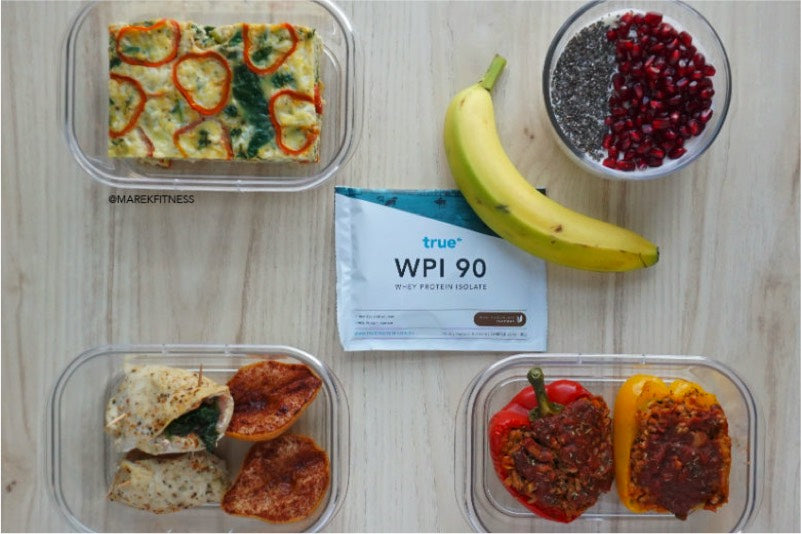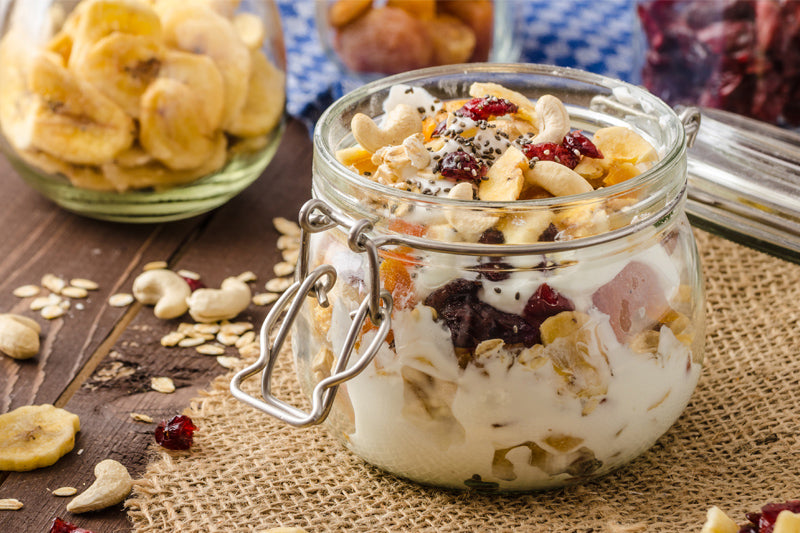To Carb or Not to Carb? That is The Question
Cutting carbohydrates from your diet with the aim of losing fat is not a new concept. In fact, the earliest reports of carb-restricted dieting date back to the 1860s when Englishman William Banting was prompted to lose weight and lost 20kgs on a diet composed of lean meat, soft boiled eggs and a few drinks a day. Even then, we knew the effectiveness of low carb diets.
Over the next century with advancements in science and technology we returned to a similar conclusion. The popular low-carb Atkins diet introduced in the 1970s has been a staple for dieters around the world despite controversy among healthcare professionals and fitness enthusiasts concerning drastic carbohydrate restriction.
What are carbs?
There are two distinct types of carbohydrate, simple or complex which relates to their chemical structure. Simple carbs include sugar, dextrose, white bread etc. while complex carbs include vegetables, beans, whole grains. These 2 categories also denote how quickly they are digested by the body. Simple "High GI" carbs are absorbed very quickly while complex "Low GI" carbs are harder to break down and are absorbed much slower.
Typically, a diet too high in simple carbs will have negative health effects. Not only will that excess carbohydrate be stored as fat it may contribute to the risk of diabetes and heart disease. A diet consisting of more complex Low GI carbs can actually have the opposite effect and reduce these risks to make for a healthier diet.
There is a place for simple and complex carbs in your diet but you need to strike a balance, eating those complex (Low GI) carbs as a regular part of your healthy balanced diet is the way to go with some simple (High GI) carbs when needed like post workout or early morning.
The role of carbs
Carbohydrates in your diet are converted by your body into fuel to be used for energy (glucose) and are the body's go-to fuel as it is the most potent and efficient energy source available. Carbohydrates also contribute to other roles in the body like mental cognition, regulating the amount of sugar in your blood so your cells get the energy required, assisting in the absorption of other nutrients and providing nutrients for good bacteria in your intestinal tract. Carbs as an entity are good and actually vital to your body’s functions.
So how does that extra bowl of pasta end up on your belly? Well as we said carbs are an efficient fuel source and your body knows this so your cells only take what is required and don’t store any excess, most carbs unused by your cells will be converted into glycogen and stored away as fuel in your liver and muscles to be tapped into when required. If your diet contains even more carbs than what is required once your cells, liver and muscles are full your body will convert that excess into fat, and that’s how your pasta bowl turns into a pasta belly.
The role of carbs when working out
Carbohydrates become essentially important when consumed around your workout. When you work out to a high intensity over a period of as little as 15-30 minutes your muscle glycogen levels will drop by about 30-40% and depletion can reach 60-75% when you are increasing that to 60-90 minutes. This substantial drop leaves your muscles thirsty for replenishment, and you have a reasonably short window to make the most of the ‘sponge-like’ state your muscles are in.
The ideal time to get this replenishment in is about 0-15 minutes after your final rep, at this time your muscles are at their most absorbent so take this opportunity seriously or you will limit recovery and actually undo some of the work you just put in.
A hit of fast releasing High GI carbs like dextrose is a very good way to replenish those glycogen stores as quickly as possible as they do not need to go through lengthy processes to be absorbed. This hit of High GI carbs will also spike insulin levels in the body helping other essential nutrients to be absorbed while also encouraging growth by being an anabolic hormone. With your glycogen stores full up the body is encouraged into a state of greater protein synthesis meaning your recovery and muscle growth will be increased.
Insulin spikes will inhibit fat loss if performed too regularly, sticking to only the post workout window for High GI is the best way to ensure you are continually building muscle while still reducing fat.
What restricting carbs will do to your body
Your body’s main energy source is glucose converted from carbs and your body will always look to use this as its first source of energy. If no glucose is available, because you’re on a carb-restricted diet, your body will look to fat stores to burn as fuel and then it will start to break down muscles and use the proteins as its energy source. If this catabolic process is continued for long periods of time your body will eventually run out of fuel from glucose, fats and muscle and you will be left looking emaciated. Not the fitness model look you were going for I am sure!
So what shall I do?
If your goal is losing weight without stripping away those hard-earned muscles you will want to consider the time periods of low or no carbs very carefully. A trick used by many health and fitness professionals is carb-cycling. Short periods of low carb intake ensure the desired effect is achieved.
The idea behind it is to reduce your carb intake for a short period of time to encourage your body to use fat stores as fuel but not long enough for the body to then start metabolizing muscles as fuel. A common structure used in carb cycling covers a 5-day diet plan. A straightforward guide to follow would be to calculate your highest day of carb intake to be 1-1.5 grams of carbs to each pound of bodyweight.
Here is an example of a 5-day carb cycle (Based on an 80kg man);
- Day 1: 125 grams
- Day 2: 75 grams
- Day 3: 25 grams
- Day 4: 100 grams
- Day 5: 175 grams
Following this method of short intervals will ensure you continue to drop body fat without restricting your ability to build lean muscle.
You will likely hit a plateau in fat loss when your body becomes familiar with the pattern, this time is the best to get in your ‘cheat meal’ with 3-4 days of a high clean carb intake to convince your body to continue burning fat as fuel when you return to the cycle.
Another way to trick your metabolism back into fat burning is to have 3 consecutive zero carb days. This means no complex starchy carbs, only the nominal amount found in fibrous vegetables. This will have the same effect as several high carb days but be sure not to do any more than 3 zero carb days as this will have an adverse effect on brain function and muscle development.
Conclusion
Carbs are not the villain! Clean carbs perform many different functions and discarding those benefits is an injustice to the gains you work so hard for. Getting those all-important carbs in but keeping to the correct levels doesn’t have to be hard, you have just got to be smart.
Use the insight you have gained here to make the correct plan for your body and training style. High-intensity training coupled with a smart diet, patience and persistence will ensure you achieve the goals you set out for.
If you have any questions or comments don’t forget to get in touch, contact@trueprotein.com.au




